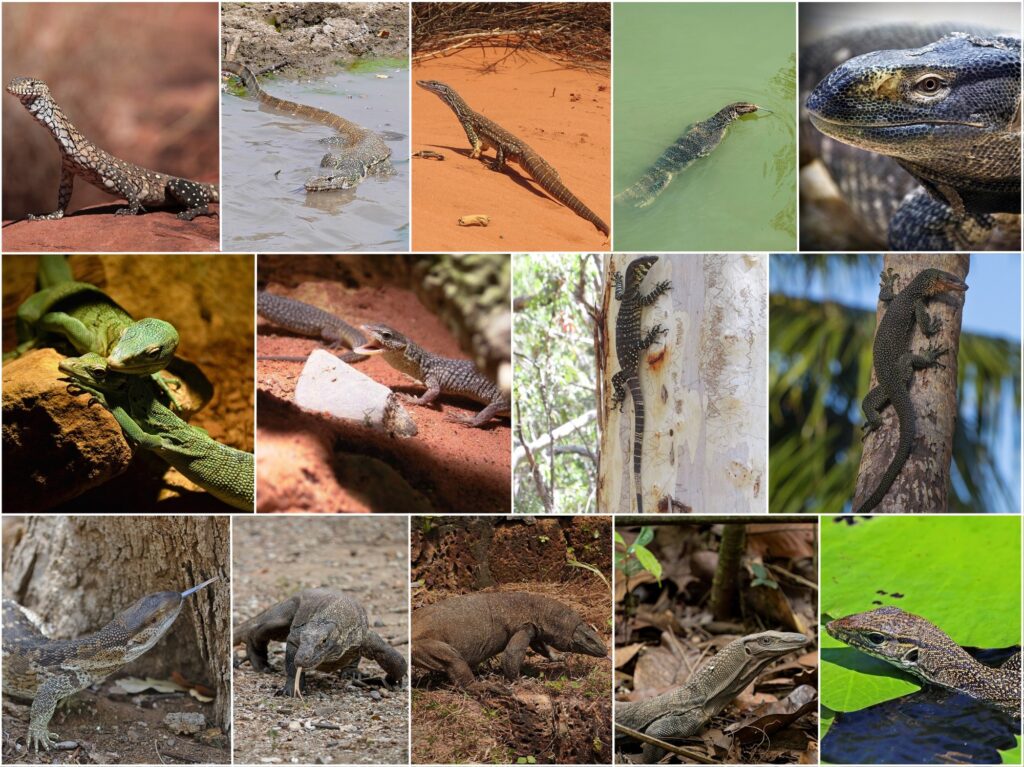When one species becomes several – divergent evolution
Evolution is the basis of the diversity of species on Earth. All evolution is actually the result of random genetic mutations – some of which confer such a great advantage on the individual that it increases the likelihood that that individual will be able to reproduce. It can be webbed skin, a larger beak, the ability to swim at great depths, or a slender body that can climb trees better.
One type of evolution is called divergent evolution. This is when closely related species adapt to completely different environments over time, and therefore develop completely different traits – despite the fact that they share origins. Can you think of any animals that are related, but look very different?
The canids - or dog-like animals - share a common ancestor, but have evolved into many different species with various appearances and niches.
Photo: Profberger-CC-BY-SA
The felids - or cat-like animals - also share a common origin, but the evolution into different species has provided them with various lifestyles.
Photo: LittleJerry-CC-BY-SA
Long ago, all vertebrates share a common origin. The image illustrates how bones in the forelimbs of humans, dogs, birds, and whales have the same origin but evolved into different functions.
Photo: Volkov-Vladislav-Petrovich-CC-BY-SA
Within the group of frogs, there is a wide variation in color, form, and lifestyles – something that has evolved through divergent evolution.
Photo: Termininja-CC-BY-SA
Mammoths and elephants share a common origin, but through divergent evolution, they acquired different lifestyles and appearances.
Photo: Mauricio-Anton-CC-BY, Bernard-DUPONT-CC-BY-SA
Darwin’s finches that moved across the ocean
Darwin’s finches are a group of birds that live on the Galapagos Islands, off the coast of Ecuador. The birds are in fact not true finches, but belong to a family called tanager. Charles Darwin, the famous scientist who developed the theory of evolution, studied these birds during his journey to the islands in the 1800s. He noticed that the finches had different beak shapes, depending on the type of food they ate. For example, finches with long, pointed beaks were better suited for catching insects, while finches with short, coarse beaks were better suited for cracking seeds. Later, scientists have explained that Darwin’s finches all descended from a single species of bird, which made its way across the ocean to the Galapagos Islands about 2 million years ago.
Over time, the birds spread out across the islands, and the different groups developed different niches – that is, ways of life – and eventually became several different species. This is an example of divergent evolution, as finches with different beak shapes evolved from a common ancestor. Today, 18 species of Galapagos finches have been described.
The group of birds known as Darwin's finches has evolved into different species through divergent evolution but shares a common origin. The most notable differences can be seen in their various beak sizes.
Photo: Kiwi-Rex-CC-BY-SA
In Lake Malawi in Africa, there are approximately 700 different species of cichlids, all of which have a common origin. The diverse niches present in the lake have led to various fish groups adapting in very different ways.
Photo: platours_flickr-CC-BY-NC-ND
Hundreds of different Malawi cichlids
African cichlids are a group of fish that live in freshwater lakes in Africa. There are many different species of cichlids, and they have a wide variety of shapes, sizes, and colours. The cichlids have developed to fill many different ecological niches in the lakes. Some are adapted to eating algae, while others eat other fish. Some live at the edge of the beach, and others at great depths.
Lake Malawi is the lake with the most different cichlids. 700 species are described, but there are probably up to 1000, and they are closely related. Over millions of years, Lake Malawi’s water level has both risen and fallen, and this has created many new niches – which in turn have led to new species. As cichlid populations evolved over time, they developed different adaptations that allowed them to specialise in eating different types of food. For example, some cichlids have sharp teeth for catching and eating other fish, while others have flat teeth for scraping algae from rocks.

Photos: Derek Keats-Vengolis-James Reardon-psyberartist-Christopher Watson-Donald Hobern-James Jolokia-Hectonichus-Charles J. Sharp-Bernard DUPONT-Sheba_Also-John Tann-CC-BY-SA
Common origin of the monitor lizards
Monitor lizards are a group of lizards that live in Africa, Asia, and Oceania. There are many species of monitor lizards, but they all belong to the same genus. Although the monitor lizards are closely related to each other, they are very different in size, shape and way of life. The smallest monitor lizard grows to about 20 cm in length, while the Komodo dragon, the giant of the monitor lizard, grows up to three meters long! Some monitor lizards are adapted to climbing trees, while others live on the ground. There are also monitor lizards that live partly in the water!
Different lifestyles have led to different adaptations in the monitor lizards. Arboreal monitor lizards have long, slender bodies and tails that can grasp or keep their balance as the lizard climbs. Ground-dwelling monitor lizards have stout bodies and strong legs for running on the ground.